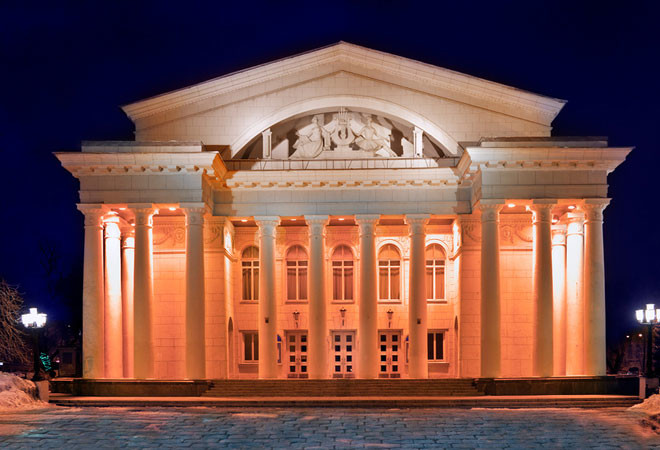City of culture and education
On the surface Saratov is a slow-moving, traditional provincial city. However, dig a little deeper and you’ll find that it’s cultural, trendy and a place to party into the small hours. Saratov’s culture is centrally located in the Kirov avenue, embankment and the streets nearby. In their space you’ll find remarkable architecture made up of private residences, museums, theatres and churches. Many tourists stay in this small area of Saratov to see the major sights, and then head out thinking that it’s all about this city.
Pity, those people missed out on seeing what cultural Saratov is really about. To do that, you have to get out of the center’s boundaries and head over to the districts that surround it. For example, there’s the XIX century city central park with picturesque ponds and shady alleys. Even further out, the Victory park displays unique collection of military machinery within the city limits.
Saratov is a versatile city that has much more to offer than bliny and churches. It has a certain cosmopolitan flavor, namely, in the culture of Saratov German heritage. Back in time there was a rural German settlement in the early XIX century. You’ll notice the special influence of German settlers in an unusual collection of architecture of the city(Radisheva Str. and Kirov avenue), where the pre-revolutionary and Soviet periods are also notable.
Years ago, Saratov used to be called the cultural capital of the Volga region for certain reasons. The Saratov Drama Theater was founded in 1802, making it one of Russia’s oldest. It is ranked as one of Russia’s National Theaters. Today there’re 10 theatres in the city, one of them, Saratov Kiselev Academic Youth Theater, being a unique phenomenon in the Russian culture. It was the first theater for children in the world.
Despite the fact that in the XIXth century Saratov was on the 22nd place among other Russian cities for the level of literacy, the citizens’ education developed on at a fast pace, fostered by regularly appearing bookstores and libraries. The first library was established in 1831. Moreover, Saratov is reach in universities, there are almost 15 of them educating about 100 000 students.
Almost all of the city’s “must sees” are in the center, the Radischev Art Museum being one of them. Despite the fact that it can be easily included in the “Best of the Beaten track” list, it’s absolutely worth visiting. It was opened in 1885 and back then became the first public art museum in the Russian province. Today it contains more than 20,000 exhibits, including ancient Russian icons, as well as works by some of the finest Russian painters (e.g. Aleksandra Ekster, Pavel Kuznetsov, Aristarkh Lentulov, Robert Falk, Pyotr Konchalovsky, Martiros Saryan, Fyodor Rokotov).
Stationary circus is very unusual in the rest of the world except Russia. 41 stationary circuses successfully operate in the Russian cities, one of them is resident in Saratov, being the first Russian stationary circus. The first Conservatory in the province also appeared in Saratov in the beginning of the XX century (the third after Moscow and St. Petersburg). The creation of this conservatory pushed the development of music and concert life in the city. Well-known Russian artists, scientists, actors and other people of culture were born or educated in Saratov. One of the city’s most famous residents is Nikolai Chernyshevsky.
Saratov did not lose its cultural significance to present day. Music festivals and art competitions are held here annually, including international ones like “Delphic Games of the modern era” or “Circus Princess” contest. Sobinov Memorial Festival of Music is one of the highlights of them.
Saratov is a great city to explore on foot and blend in its genuine culture. Get off the tourist track to start hanging out where the locals are. It’s going to be a unique experience if you’re a jogger or just need to burn off the Russian traditional “bliny” or “pelmeni”:) After a long day of touring the city, a round of all-night partying awaits you in pubs, bars and dance clubs.




У меня есть вопрос!